The Pompadour: A Timeless Hairstyle for All Genders | A Complete Guide
The Enduring Allure of the Pompadour
Some hairstyles are fleeting trends, but others carve out a permanent place in the cultural lexicon. The pompadour is one such icon. With its signature voluminous sweep of hair on top and neatly trimmed sides, the pompadour is more than just a haircut; it's a statement of confidence, rebellion, and timeless elegance. For decades, it has been associated with rock-and-roll cool and classic masculinity. However, its true power lies in its incredible versatility and its ability to transcend gender, age, and style boundaries. This definitive guide explores the rich history, modern interpretations, and expert styling techniques behind the pompadour, a classic style truly for all genders.
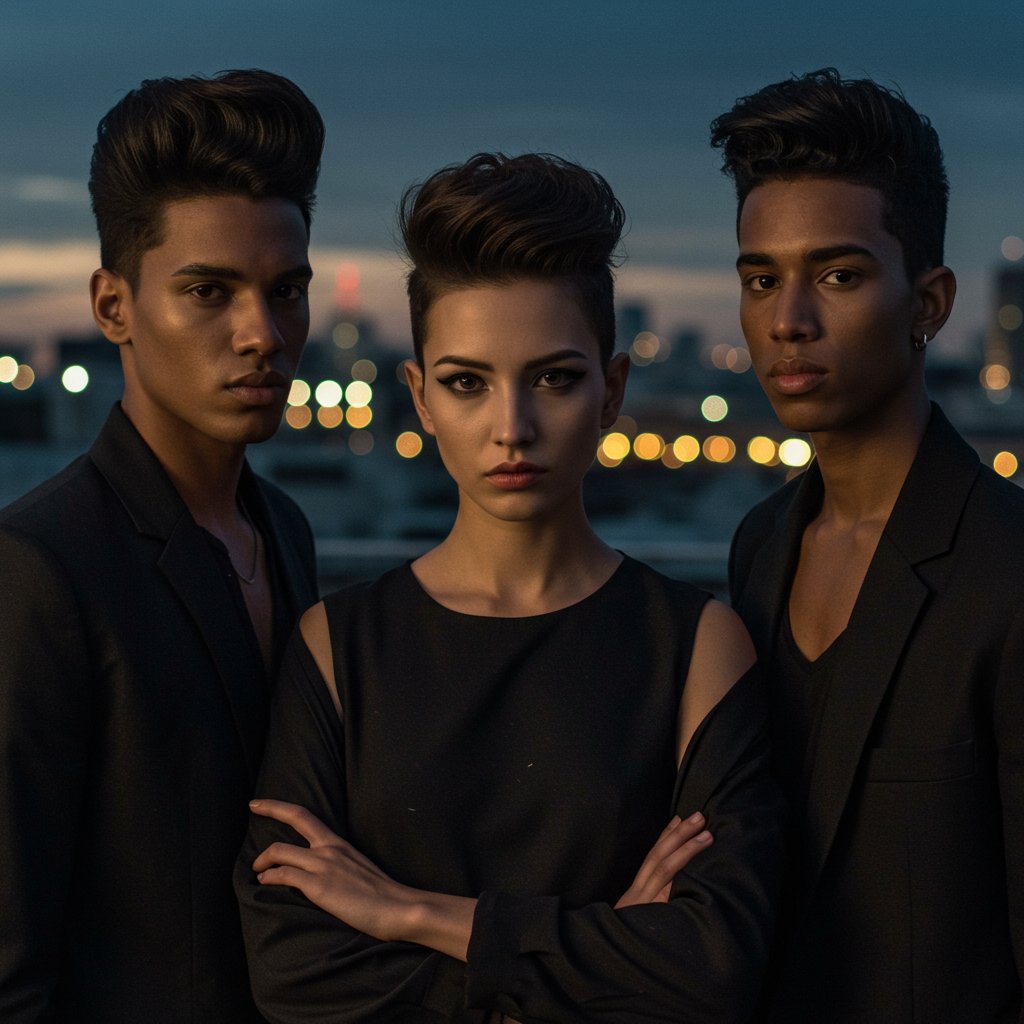
From the royal courts of 18th-century France to the silver screens of Hollywood and the vibrant stages of modern music, the pompadour has been continuously reinvented. Today, it is embraced by people from all walks of life, celebrated for its bold silhouette and adaptable nature. Whether you prefer a sleek, polished look, a textured, modern finish, or a dramatic, high-fashion statement, there is a pompadour variation for you. Understanding the fundamentals of the cut, the right products, and the proper styling techniques is the key to unlocking this hairstyle's full potential and making it uniquely your own.
The Storied History of the Pompadour
The journey of the pompadour begins not with a rebellious rock star, but with a powerful woman in the French royal court. The style is named after Madame de Pompadour, the official chief mistress of King Louis XV in the mid-18th century. She wore her hair swept up and back from her forehead, creating a voluminous look that exuded aristocracy and elegance. This style was quickly adopted by fashionable women of the era, becoming a symbol of status and high society. For over a century, the pompadour remained an exclusively female hairstyle, evolving in height and intricacy but always retaining its signature upward sweep.
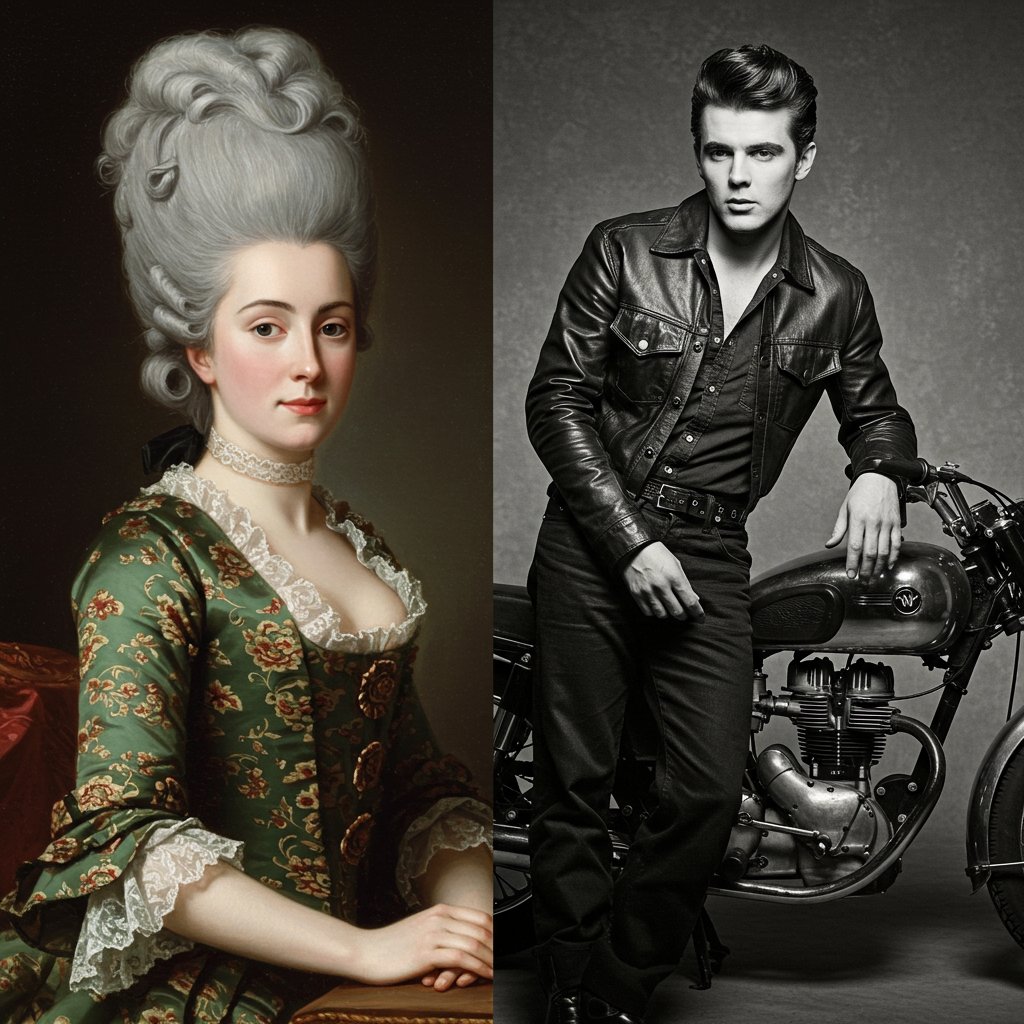
It wasn't until the early 20th century that men began to adopt the style, but it truly exploded into mainstream men's fashion in the 1950s. Icons of rebellion and rock and roll, such as Elvis Presley, James Dean, and Little Richard, made the pompadour synonymous with a new era of youth culture. Their high-volume, slicked-back pompadours, often paired with leather jackets and a confident swagger, represented a break from the conservative crew cuts of the previous generation. This cemented the pompadour as a symbol of cool, non-conformity, and undeniable charisma, a legacy that continues to influence fashion and hairstyling today.
Why the Pompadour is a Timeless, Gender-Fluid Statement
In today's world, the lines of gender expression in fashion and beauty are beautifully blurred, and the pompadour stands as a perfect example of a truly gender-fluid hairstyle. Its core elements—volume, structure, and a clean silhouette—are not inherently masculine or feminine. Instead, they are tools for self-expression, allowing the wearer to project confidence and individuality. The pompadour's power lies in its ability to be customized. It can be sharp and architectural, soft and flowing, edgy and disconnected, or subtle and professional, adapting to the wearer's personal style regardless of their gender identity.
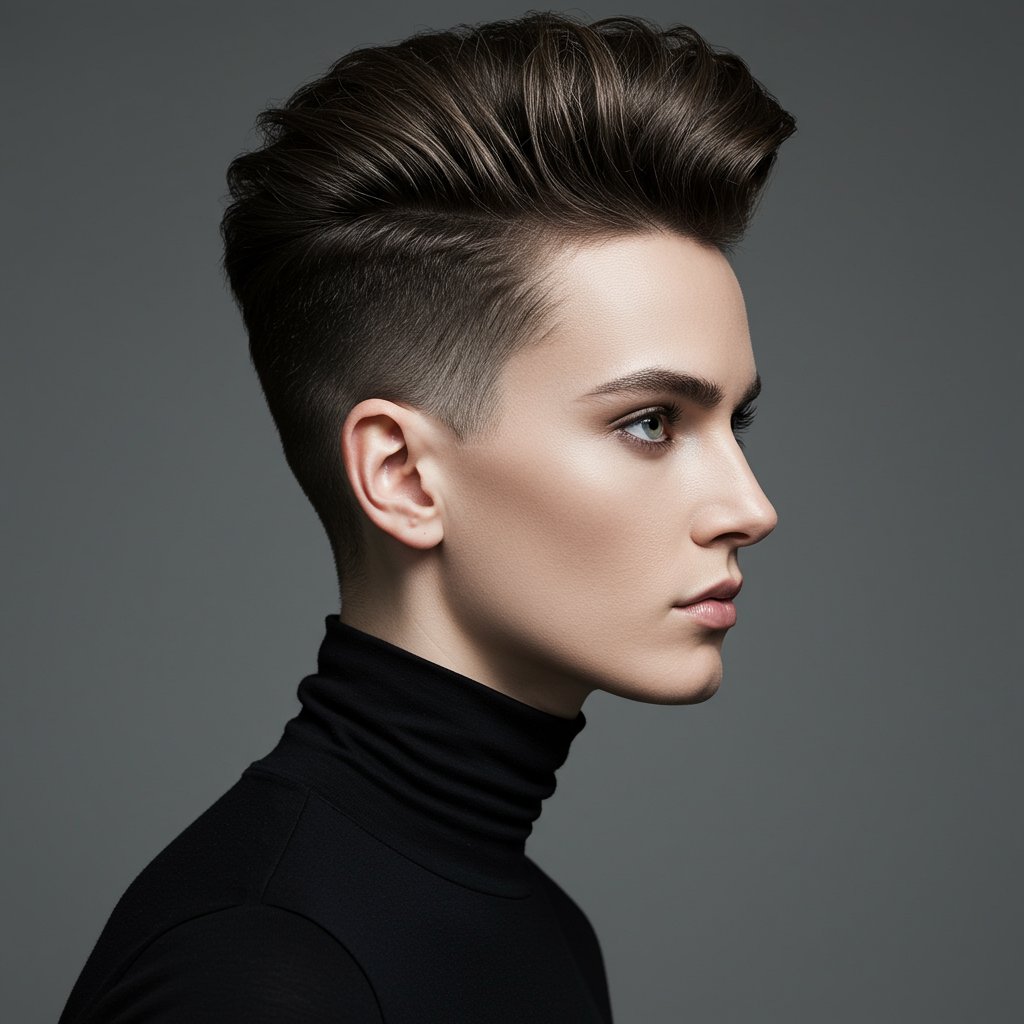
Modern icons have championed this versatility. Artists like Janelle Monáe and P!nk have famously sported sharp, powerful pompadours, reclaiming the style's rebellious spirit with a modern, feminine edge. Simultaneously, figures like David Beckham and Bruno Mars have kept the classic men's pompadour in the spotlight, showcasing its evolution with modern fades and textures. This widespread adoption across the gender spectrum proves that the pompadour is not just a haircut, but a canvas. It empowers individuals to craft a look that feels authentic to them, making it one of the most enduring and inclusive hairstyles of our time.
The Anatomy of a Perfect Pompadour Cut
Achieving an impeccable pompadour begins long before any styling product is applied; it starts with a precision haircut executed by a skilled stylist. The fundamental structure of any pompadour is a contrast between the lengths: shorter hair on the sides and back, and significantly longer hair on top. This contrast is what creates the dramatic silhouette and allows for the signature volume. How the sides are cut is a crucial decision that defines the overall character of the style.
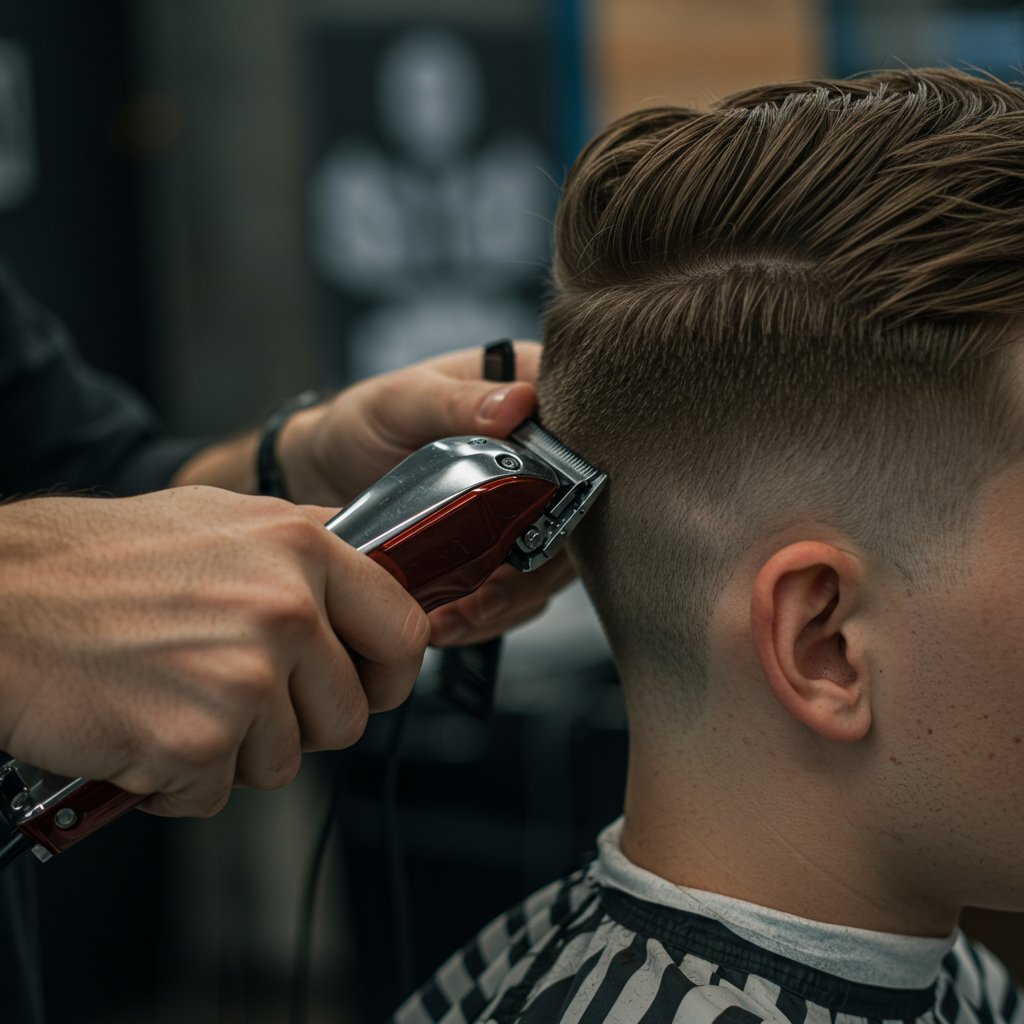
It's All in the Details: Sides and Top
The most popular choice for the sides is a fade. A high fade creates a sharp, bold contrast, while a mid fade offers a balanced, classic look. A low fade provides a more subtle, conservative transition. For a more dramatic and disconnected look, an undercut—where the sides are clipped to one uniform short length—is an excellent option. Alternatively, a scissor-over-comb technique can be used for a softer, more textured finish that grows out more naturally. The hair on top must be left long enough to be directed back, typically needing at least 4-6 inches at the fringe to create significant volume.Consulting with Your Stylist
A thorough consultation with an experienced stylist is non-negotiable. This is where you can discuss your hair type, face shape, and lifestyle to determine the best pompadour variation for you. For example, a rounder face shape might benefit from a taller, more angular pompadour to add length, while a longer face shape might suit a slightly softer, wider version. Your stylist can also assess your hair's density and texture to recommend the ideal cut and styling products to help you achieve and maintain the look at home.Modern Pompadour Variations for Every Style
The classic pompadour has inspired countless modern interpretations. This adaptability is key to its lasting popularity, allowing anyone to find a version that perfectly suits their personal aesthetic. Here are some of the most popular variations seen in professional hair salons today.
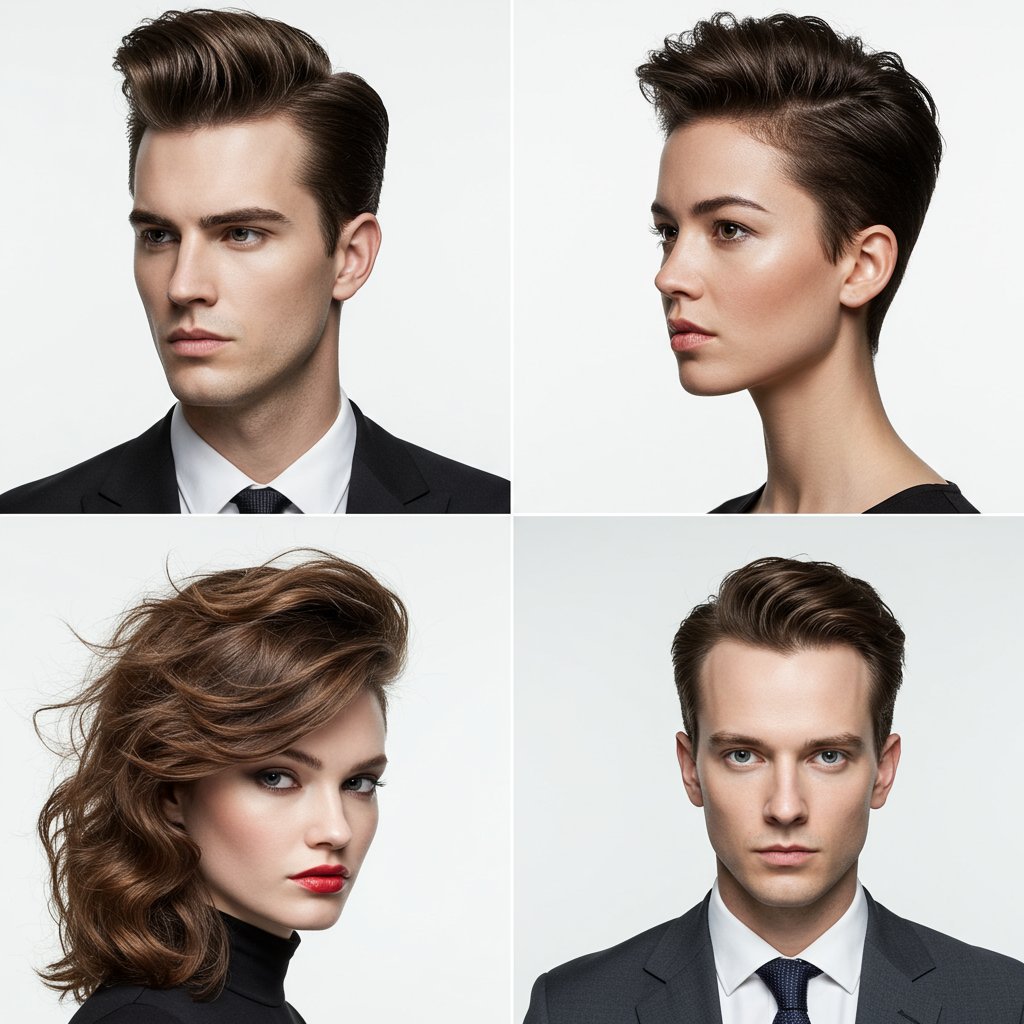
The Classic Pompadour
This is the style that pays homage to the 1950s originals. It features significant height, a defined 'pomp' at the front, and is typically styled with a high-shine pomade for a sleek, polished finish. The sides are kept neatly tapered but aren't necessarily faded down to the skin, maintaining a more traditional, fuller look.The Modern Pompadour
This contemporary take is often characterized by a sharper contrast. It usually incorporates a tight skin fade on the sides and back, creating a disconnected effect that makes the volume on top pop. The styling is often less rigid, with more texture and a matte or natural-shine finish achieved with products like fiber paste or clay.The Textured Pompadour
For a more relaxed, lived-in vibe, the textured pompadour is the perfect choice. Instead of a sleek, uniform sweep, this style emphasizes natural movement and separation in the hair. It's achieved by using lighter products like sea salt spray and matte clays, and often involves finger-combing instead of using a traditional comb to create a looser, more organic shape.The Long-Haired Pompadour
This dramatic variation is for those with considerable length on top. The longer hair allows for a more flowing, sweeping pompadour that can be tied back into a top knot or bun. It offers incredible versatility, allowing the wearer to switch between a bold, voluminous style and a more contained look.The Ultimate Step-by-Step Styling Guide
Mastering the art of styling a pompadour at home is essential for keeping it looking sharp between salon visits. While it may seem intimidating, the process can be broken down into a few manageable steps. With the right tools and techniques, you can achieve salon-quality results every day.
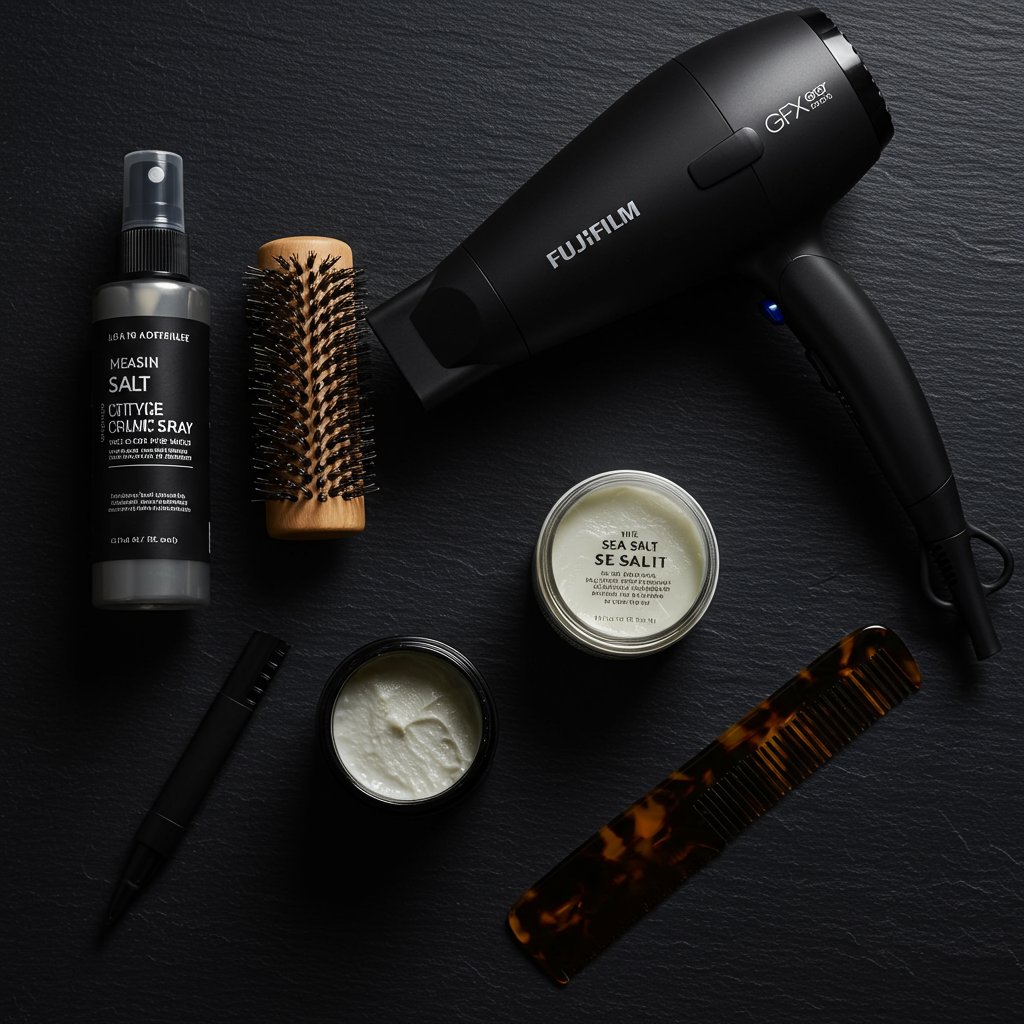
Step 1: Prep Work is Key
Start with clean, damp (towel-dried) hair. Proper preparation is the foundation of a long-lasting pompadour. Apply a pre-styling product to build a base for volume and hold. A volumizing mousse or a few spritzes of sea salt spray worked into the roots will provide grit and lift, making the hair more receptive to styling.Step 2: The Blow-Drying Technique
This is the most critical step for creating volume. Using a blow dryer on a medium-to-high heat setting, begin by directing the airflow upwards and backwards from the hairline. Use a round brush or a vent brush to lift the hair at the roots as you dry. Continue this motion, working from the front of your hairline to the crown. For maximum volume, focus the heat at the roots while lifting with the brush. Once the hair is about 90% dry, switch the blow dryer to the cool setting to lock the shape in place.Step 3: Choosing and Applying the Right Product
Select a styling product based on your desired finish. For a classic, high-shine look, use an oil-based or water-based pomade. For a modern, textured, and matte finish, opt for a styling clay, fiber, or paste. Take a small, dime-sized amount of product and warm it up by rubbing it between your palms until it's evenly distributed. Apply the product evenly throughout your hair, starting from the back and moving forward, ensuring you coat the hair from root to tip. This prevents clumps of product at the front.Step 4: Finishing Touches
Now, use a comb to shape your pompadour. For a classic, neat look, use a fine-tooth comb to create clean lines and a defined pomp. For a more textured style, use your fingers or a wide-tooth comb to arrange the hair, creating separation and movement. Once you are satisfied with the shape, you can set the style with a light mist of strong-hold hairspray for all-day durability.Maintaining Your Pompadour: Salon Visits and At-Home Care
A great pompadour requires consistent maintenance to keep it looking its best. This involves a combination of regular professional haircuts and a solid at-home hair care routine. Neglecting either can quickly cause your sharp style to lose its shape and impact.
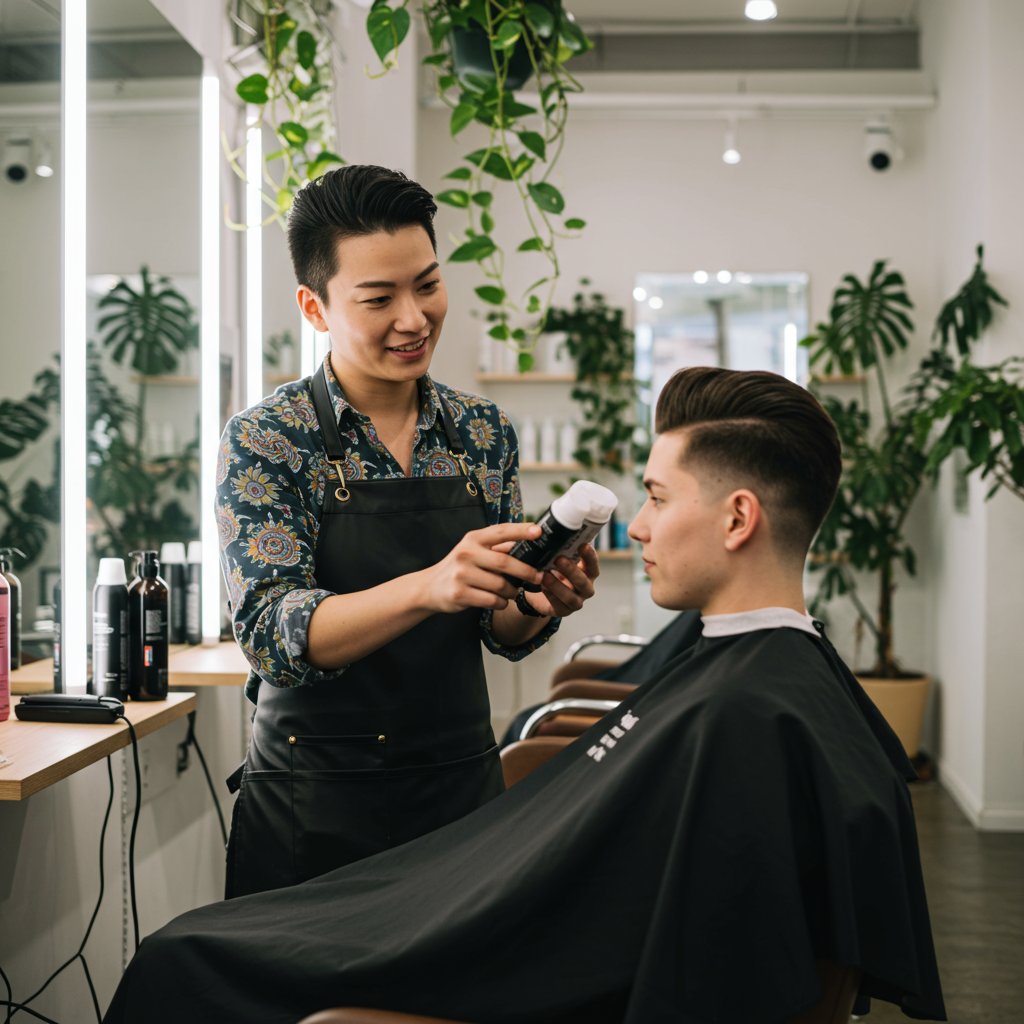
Keeping the Cut Sharp
Because the pompadour relies on the contrast between the short sides and long top, regular trims are essential. The hair on the sides and back grows quickly, and letting it get too long will soften the silhouette and diminish the style's sharp effect. Plan on visiting your stylist every 3 to 4 weeks to have the fade or taper cleaned up. The top can be trimmed less frequently, perhaps every 8 to 12 weeks, depending on how fast your hair grows and the specific variation you have.Healthy Hair, Healthy Style
Healthy hair is easier to style and holds its shape better. Frequent use of styling products can lead to buildup, which weighs hair down and makes it look dull. Incorporate a clarifying shampoo into your routine once a week to remove residue and reset your hair. Always follow up with a quality conditioner to replenish moisture, especially if you use a blow dryer regularly. A healthy scalp and well-nourished hair are the invisible foundation of a perfect pompadour.Tips for Success: Perfecting Your Pompadour
- Start Small with Product: It's always easier to add more product than to take it away. Start with a dime-sized amount and add more only if necessary to avoid a greasy, weighed-down look.
- Master the Blow Dryer: The blow dryer is your most important tool. Practice directing the airflow and using your brush to create lift. This step does more for volume than any product can.
- Work with Your Hair Type: If you have fine hair, focus on lightweight volumizing products. If you have thick or curly hair, you may need a stronger hold product and more heat to shape it.
- Don't Aim for Perfection: Especially with modern, textured pompadours, a little bit of imperfection can add character. A style that looks too rigid can sometimes appear dated.
- Have an 'Off-Day' Style: Not every day will be a perfect hair day. Have a backup plan, like a slicked-back look or a more casual side part, for days when you're short on time.

Frequently Asked Questions (FAQ)
Q1: Can I get a pompadour with curly or wavy hair?
Absolutely! A pompadour with curly or wavy hair creates a unique, highly textured look. The key is to work with your hair's natural pattern rather than against it. You may need to use a strong-hold product designed for curls, like a curl cream or a heavier pomade, and a diffuser attachment on your blow dryer can help set the style without creating frizz.Q2: What face shapes suit a pompadour?
The pompadour is surprisingly versatile. Its height can help elongate round or square face shapes. For oblong or rectangular faces, a slightly shorter, wider pompadour can add balance by avoiding too much extra height. An experienced stylist can tailor the proportions of the cut to flatter your specific facial structure.Q3: How long does my hair need to be for a pompadour?
To create a noticeable pompadour, you'll generally need at least 4 inches of hair on top, especially at the fringe area. For more dramatic and classic versions, 5-6 inches or more is ideal. The sides can be cut as short as you like.Q4: What's the difference between a pompadour and a quiff?
A pompadour is styled by sweeping the hair straight back, creating a uniform wave of volume from front to back. A quiff, on the other hand, features a large, voluminous front section that breaks forward or to the side slightly before the rest of the hair is directed back. The pompadour is generally a more structured, uniform shape.Q5: How do I fix a pompadour that falls flat during the day?
If your pompadour deflates, the issue is likely in the preparation. Ensure you're using a pre-styler and blow-drying thoroughly to build a strong foundation. You can carry a small travel-size hairspray or texture powder to quickly touch up and add a boost of volume if needed. Simply fluff the roots with your fingers and re-spray.Q6: Is a pompadour a high-maintenance hairstyle?
It can be. The pompadour requires daily styling (typically 5-10 minutes) and regular salon visits (every 3-4 weeks) to maintain its shape. It's a commitment, but for those who love the look, the confident feeling it provides is well worth the effort.Conclusion: Embrace Your Style with the Perfect Pompadour
The pompadour is far more than just a hairstyle; it's a piece of history, a symbol of rebellion, and a powerful tool for modern self-expression. Its ability to adapt and evolve has allowed it to remain relevant for centuries, and its embrace by people of all genders has solidified its status as a truly timeless and inclusive classic. From the sharp, clean lines of a modern undercut pompadour to the soft, textured flow of a more relaxed variation, this style offers a world of possibilities.
Achieving the perfect pompadour is a partnership between a precision haircut and a confident styling routine. By understanding its structure, choosing the right products, and mastering the techniques, you can wear this iconic look with poise and personality. If you're ready to make a statement, consult a professional stylist. They can help you design a pompadour that not only complements your features but also perfectly expresses your unique identity.


